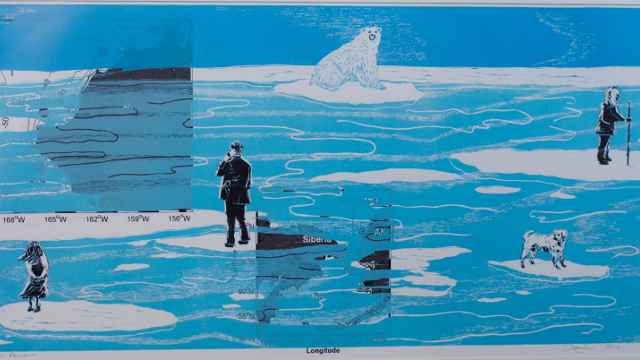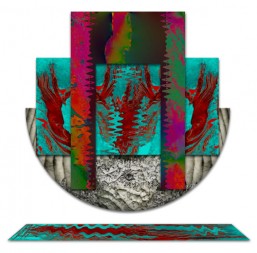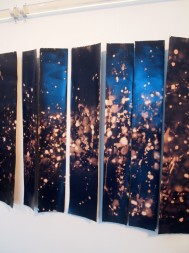
Helen Golden is a digital fine artist; her daughter Nadine Golden is a scientist with the U.S. Geological Survey's Pacific Coast and Marine Science Center. Although both live in Santa Cruz, mother and daughter seem worlds apart. But in fact, they are fascinated by each other's work, as evidenced by two pieces in the R. Blitzer Gallery's "earth • science • art" show: Nadine's scientific poster about seafloor mapping and Helen's "Tribute to the Argonauts," a tapestry printed with colorful patterns based on her daughter's maps.
Curator Lisa Hochstein conceived earth • science • art to break down barriers and encourge cross-pollination between art and science. Among the project's sixteen artist/scientist pairs, the Goldens are unique in already being acquainted. The other scientists and artists, recruited by Hochstein and USGS deputy center director Jane Reid, met for the first time in January at a session reminiscent of speed-dating. Scientists spent a few minutes describing their research, then artists chose the scientists whose work most interested them.

Most had never engaged in such a collaboration. Amy Draut, a sedimentologist researching the Elwha River dam in Washington state, has scant artistic experience. But sculptor Jamie Abbott was drawn to her description of the dam's structure and the cascading effects of its removal, from sediment changes to returning salmon. After the two bonded over their love for the Red Sox, Draut ended up visiting Abbott's studio to help paste tissue paper onto a cardboard reconstruction of the dam.
In the poster beside Abbott's artwork, Draut explains the science surrounding the largest dam removal in history. New mud flats have already formed at the river's mouth. Salmon may soon fill the length of the Elwha. Abbott illustrated this potential with "Sacred Rock," which shows fish carved from indigenous red cedar swimming toward a rock that has long been submerged behind the dam.


